Today marks the end of the second phase of the PHILEAS campaign, when our time here in Alaska has drawn to its end. Tomorrow Halo will depart into the Alaskan skies one last time, and will be heading north, homebound. It feels as if an era has come to its end, even if this might sound mightily over exaggerated, but for so long this has been our lives now. In these last remaining hours, it feels appropriate to reflect on what has been, and maybe what there is still to come:
The days here have grown shorter, as the first days of autumn seem to dawn here in Alaska, which most of all paints the world in the vivid pallet of the Indian Summer. Especially here it is most beautiful, a decent, somber metaphor for the coming end of the campaign as well. It appears that our instruments are slowly waning, with minor issues with the equipment becoming more and more frequent. Nothing you can’t fix, mind that, and in recent lights our instruments and personal have performed admirably.

A poem, if you will:
Remembrances of the Newcomer The far-east winds and traces rare are what we dreamers seek above the waves of oceans and the highest mountains peak. We set our feet on northern soil, a team of many teams, and metal wings are brought to bare the weight of foolish dreams. The calling that we all once felt has brought us to these lands of ice and stone, in summertime, the task on our hands. One wonders what this time might bring, while we are here to stay, what pay-offs this campaign will bring, no-one yet dares to say. It takes a lot of time and skill of our scientists to plan ahead and pave the path to our interests. Through maces high throughout the skies, that lead us to our goal, the teams on ground will guide us well with air traffic control. Our engineers, equally skilled, equipped with tape and screw, work ceaselessly, from dawn till dusk, to make these goals come true. And unsung still, the brave few souls, who all attend each flight, who steer the craft, or who make sure that everything goes right. There are a lot of ladies here that join us in our flight; many of them have come of age, but that is quite alright. For they can see what we see not and are quite well attended by our engineers on ground as soon as we descended. There is a gal, who above all, desires aerosol, that’s liquid mixing in with gas, that does affect us all. My own mistress, to whom I tend, a marvelous device, can sense the faintest heated glow with frozen cores of ice. In contrast stands her sister, who, a heart of glowing heat, excites the air, that she breathes in, and leaves it incomplete. And then there is a fish on land, or in the air more like, who thirsts for any water that his orifice may strike. And rumor is, that ‚`ill this day, we‘re haunted by a ghost, but worry not, for he is known to measure air at most! If you discerned of whom I spoke, I recognize your guile. Your knowledge is exceptional, you might just made me smile :) After the flight, we long to see what ours did obtain. It’s most important to secure or all has been in vain. And when the stream of data flows, once streaming, and once faint, I take a breath, and realize, it feels like drying paint. But caution is our highest creed, to copy from the plane, The roundabout goes round and round, we do the same again. But can you guess if that’s enough, if we just have them twice? You never can be save enough, we have to do it thrice! (Hurray!) The dobs we gathered from the path we recently have flown require some processing still, to polish and to hone. We pick the best, then attribute for each pixels position, and rotate them, to keep it real, and fit them in addition. And when we gaze upon the stars and void that lies between we know what nothingness looks like, adjust and take the mean. And in the end, when all is done, we learn the composition, of all the air we came across, each cloud and each emission. My good professor Riese, who’s experienced and wise, one early morning gave to me this excellent advice: The best way to produce results, avert needless frustration is constantly and well applied process optimization. And frequently he spoke of it, reminded me in kind and while I tried to heed it well it burned into my mind. Optimize, yes optimize. I never truly knew, its truest sense, and as I stood, the counsel came anew. Optimize, yes optimize! From mountains I shall sing! Of wonders and of pleasures that optimization brings! A well oiled cog, maintained machine, can always run much better if only our creed, my friend, you’d follow to the letter. Optimize, oh optimize! The voices never stop! So if you choose to optimize you’ll climb far to the top! So let me share with you my friend my most treasured advice: if science is what you pursuit then you must optimize! Optimize, oh optimize! A word like love’s embrace! I might have gone a bit insane, that might just be the case, My thoughts turned dark, my soul grown sore, the light has left my eyes, I realized that rest is what I failed to optimize. -- But never-mind that! -- The weakness of my flesh is but creation of my mind, whoever fails to see my way, he truly must be blind! Who needs to sleep, how needs to rest, when there’s so much to do? I never *once* did second guess what I had got into. With every day that passes by the mists take on more shape, the unknowns bare before our eyes the more we lift the drape. Each job well done, a triumph small, truly its own reward, another white spot on the map that Halo has explored. And then one day, awaited long, in still anticipation, we lay down work and gather for a lively celebration. Don’t call it party, though, for that’s a word no-one should hear `t is but a social gathering, with music and with beer :) While our work is never done, there’s so much you can do you cannot work forever nor bite off what you can’t chew. But days off work are rarely spent in solitude, you see there are so many places here where we wanted to be. The irony, that in our zeal, to capture every sight, the feeling grows, that we miss out, no matter how one tried. A lifespan is too short a time, to learn their secrets all, to revel in the beauties that relentlessly enthrall. The sour soil of labor hard will bring aloft the fruit that long awaited, bitter earned we came here to pursuit. When kindled soft, through constant care, progressively have grown the seeds, under the Asian sun in summertime once sown. And in the end, when I look back, on days soon long come past I’ll realize that all that pain and struggle did not last. And in its place, all that remained, the knowledge that we earned, and all the things, that once unknown, we finally have learned. The time will come to part our ways, to bid us fare thee well, but suffer not the heavy heart, for one thing I can tell: As certain as the sun will shine after the pouring rain, the dreams we dare to dream will soon entice us all again.
Details on what is meant in certain verses I can provide info for.
Another day at the PHILEAS campaign, and I don’t know what to tell you about. Should I tell you that our instruments still work admirably? This much should be expected by now. They are incredibly reliable this time around. Should I tell you about how the flights went? They went great. Scientific objectives are plentiful, and the Asian summer monsoon provides us with plenty of its air here in North America. We performed multiple double flights, with tomorrow even attempting sort of a triple flight, where we will probe a single filament for a third time utilizing trajectories. But this is nothing new. Thrilling for the experienced senior scientist surely, but not for the layman. With this blog designed to provide an alternative perspective, and with us slowing exhausting, I propose a different direction for this weeks post. Everyone has a different way to cope with pressure and strain, and some of them are rather humorous. Join me then, please, into the mind of the people of the campaign, and the strange habits that have arisen during these last days:
It is a strange thing, to be on campaign this long. Like the proverbial rabbit you follow into its hole, you enter a world fully dedicated to your research, your work and truly defined by it. Only in rare moments of respite may your mind wander back to the time before that, and it feels somewhat alien to me. It is not a bitter-sweet melancholy of longing and dreaded missing, to which the weary mind may cling to, but rather a slow miring, a loosing oneself in this new world, this new life. I had expected it to be less pleasant. Its dull edge irritates me very much.
During the last days the first batch of fresh scientists have arrived here in Alaska to reinforce our teams, and the first ones have already left for home again. The next big wave will be this weekend. And here I am, right from the beginning, and right until the very end. It has been a good month now on campaign, and I can’t deny that I am no longer as energetic as before. The time has taken its toll for sure, and I’ll never truly get used to living here. It’s so familiar, and yet – so different.
But back to the point:
To recall the last week, the first couple of weeks worth of flights have been processed preliminarily. There is great consent in what we have measured, which gives us confidence in the reliability of our instruments. The Asian summer monsoon still favors us, having brought more and more filaments within our grasp, allowing us to grow our sample size substantially. The double flight, which is an especially challenging mission to undertake, where we intend to measure the same air masses in quick succession to learn about the mixing processes and general temporal development, was a good success. Given technical difficulties during the flight, which impaired some of the measurements, it appears we have followed the winds trajectories very well, a well deserved candidate for a dedicated publication at some point. It is especially pleasing, as these double flights are a especially straining and accumulate a lot of work time. A most notable result would be higher concentrations of ammonium nitrate that we detected in the atmosphere, which multiple instruments can agree to having seen, although the overall concentration has been lowered after more precise calibrations. Unfortunately, we did measure increased levels of pollution, as well as bio-polutants from this global wildfire season. Not the kind of results you’re hoping to find, but something we did find nonetheless.
Moreover, there are growing opportunities for more secondary objectives we can reach for. It is safe to say that we managed to probe pyroconvection from this years Canadian wildfires, and we will undertake another flight probing these air masses this week. It stands to reason to believe that these convections, however, are not from currently active fires, as the intensity of them as well as the surrounding winds no longer suffice to transport them over the tropopause. Trajectory calculations would suggest these fires happened a good month ago, before we deployed to Alaska. Given our original goal of this mission that’s ok, but could have been a great opportunity.
Coming this week, there will be another wave of Asian monsoon coming our way, stable enough to probe in yet another double flight. There are plans to investigate the issue of increased methane levels, which have risen in recent years, potentially due to increased release from boglands, which was a rather short-hand idea to do. Still, we’re always open for new inputs, and if it fits in our schedule chances are we will do it.
There is another thing I prepared for this blog, a little treat for the reader who actually followed this blog in the making. I will definitely include it in the next one, as I still need a little bit of time to make some final improvements. May your interest in atmospheric science not go unrewarded.
Now I guess is the time for the report on the day-off activity, the more human aspect of the campaign, and one of the reasons why I am deployed for this blog in the first place. And oh my, it did raise some serious questions, some of which challenge my basic understanding of reality. As, for example, one might wonder why some of the most educated and intelligent people – as these are mostly scientists, mathematicians and engineers with a P.h.D – would consider walking up a mountain where no trail leads to. Which, in and of itself, may be worse enough, but to do so in the explicit knowledge that there is no trail, that the ‘path‘ ahead includes wandering through the muddy and rain-soaked forest, climbing over fields of basalt and steep walls of rocks, just to reach a top with a decent view of the surrounding area. Which takes about 8 hours in total. Why did I join them? Why are we like this? Did I suffer terrible blisters halfway through, that peeled off half of the skin on my toes, and did I have to walk with mud-soaked sneakers miles across the wilderness in agony, which still pains me with every step?
Yes. The mind of the scientist truly is a wonderful thing, it almost scares me.
Please, enjoy the fruits of my suffering:
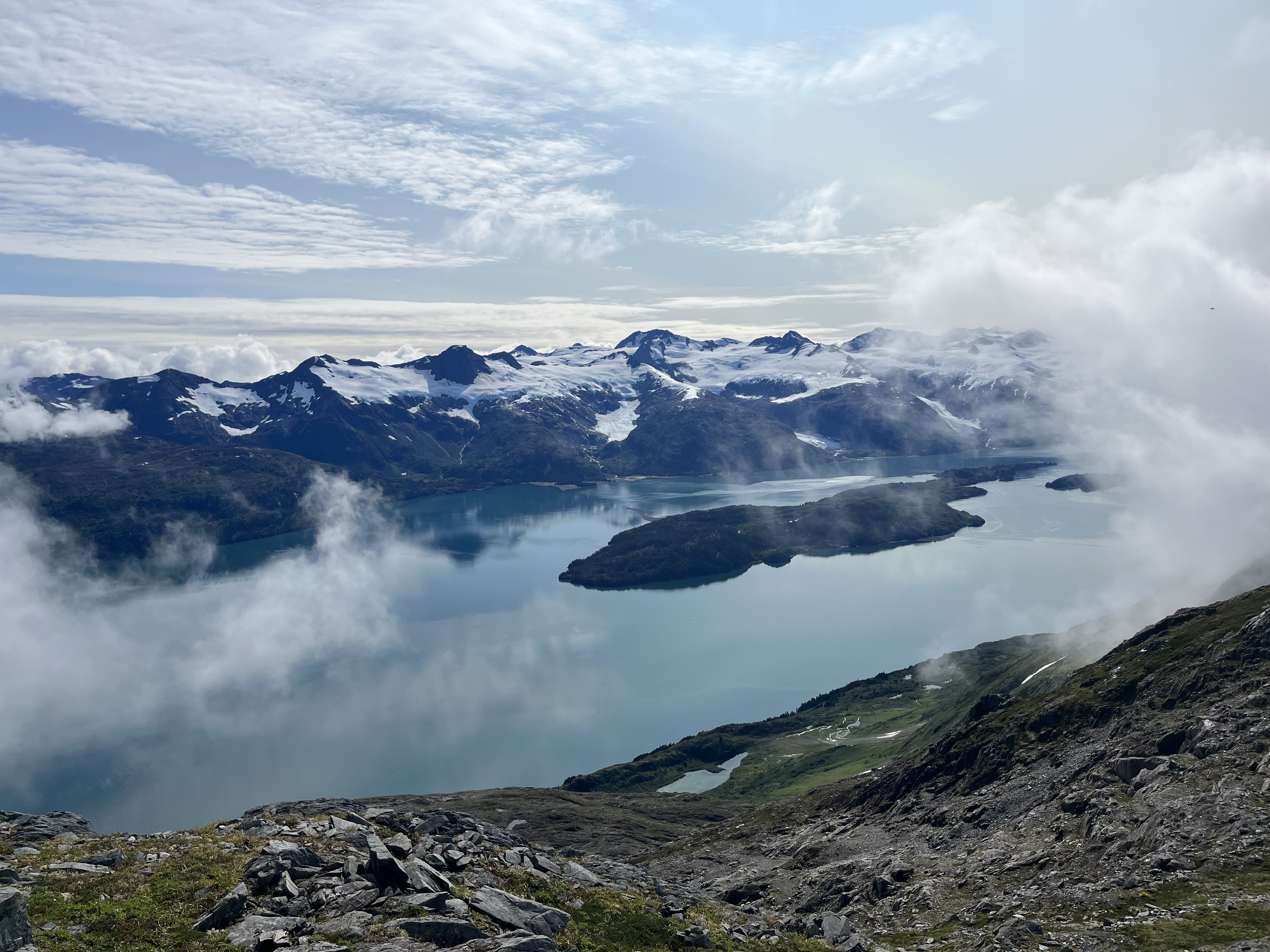
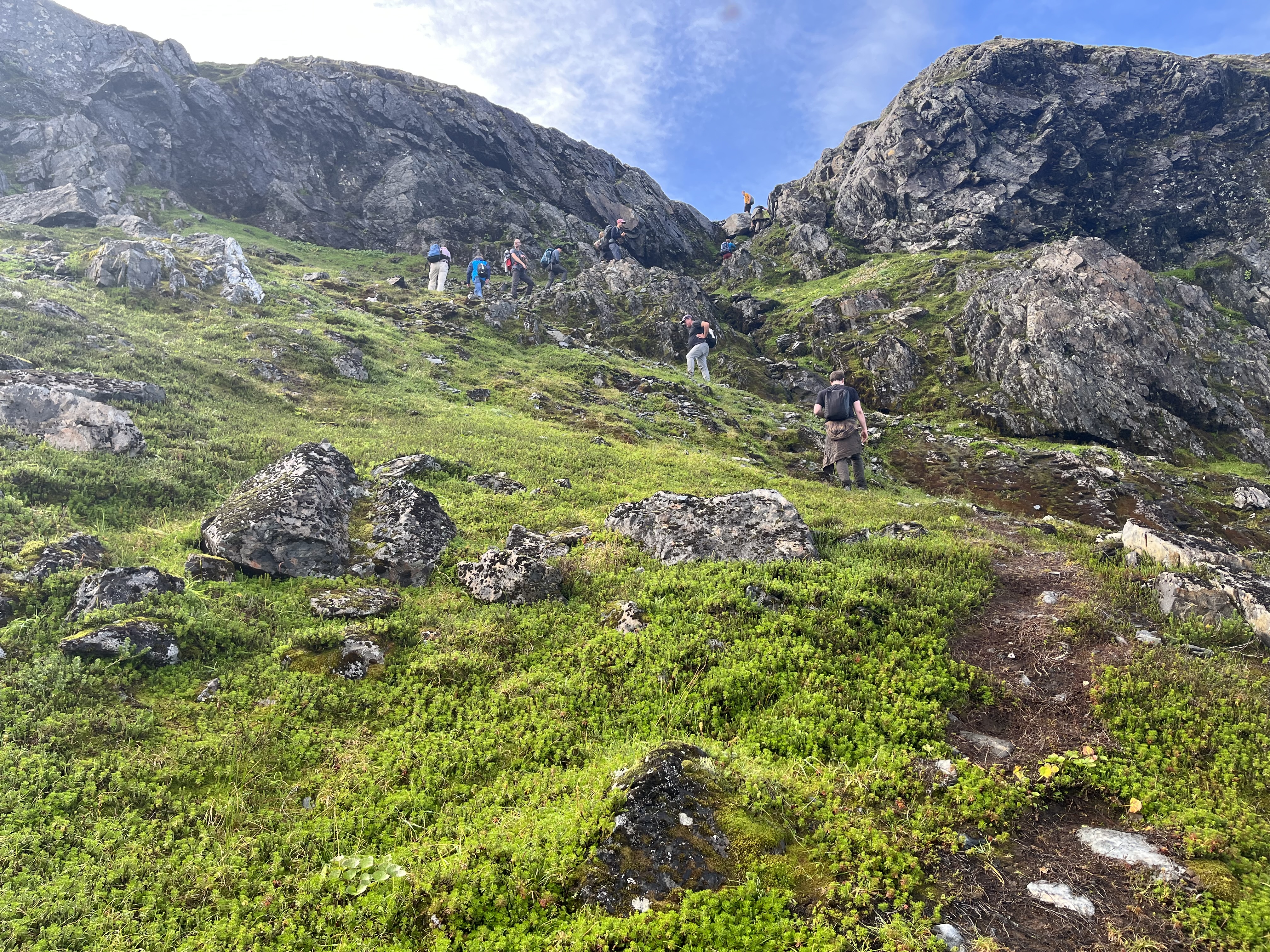

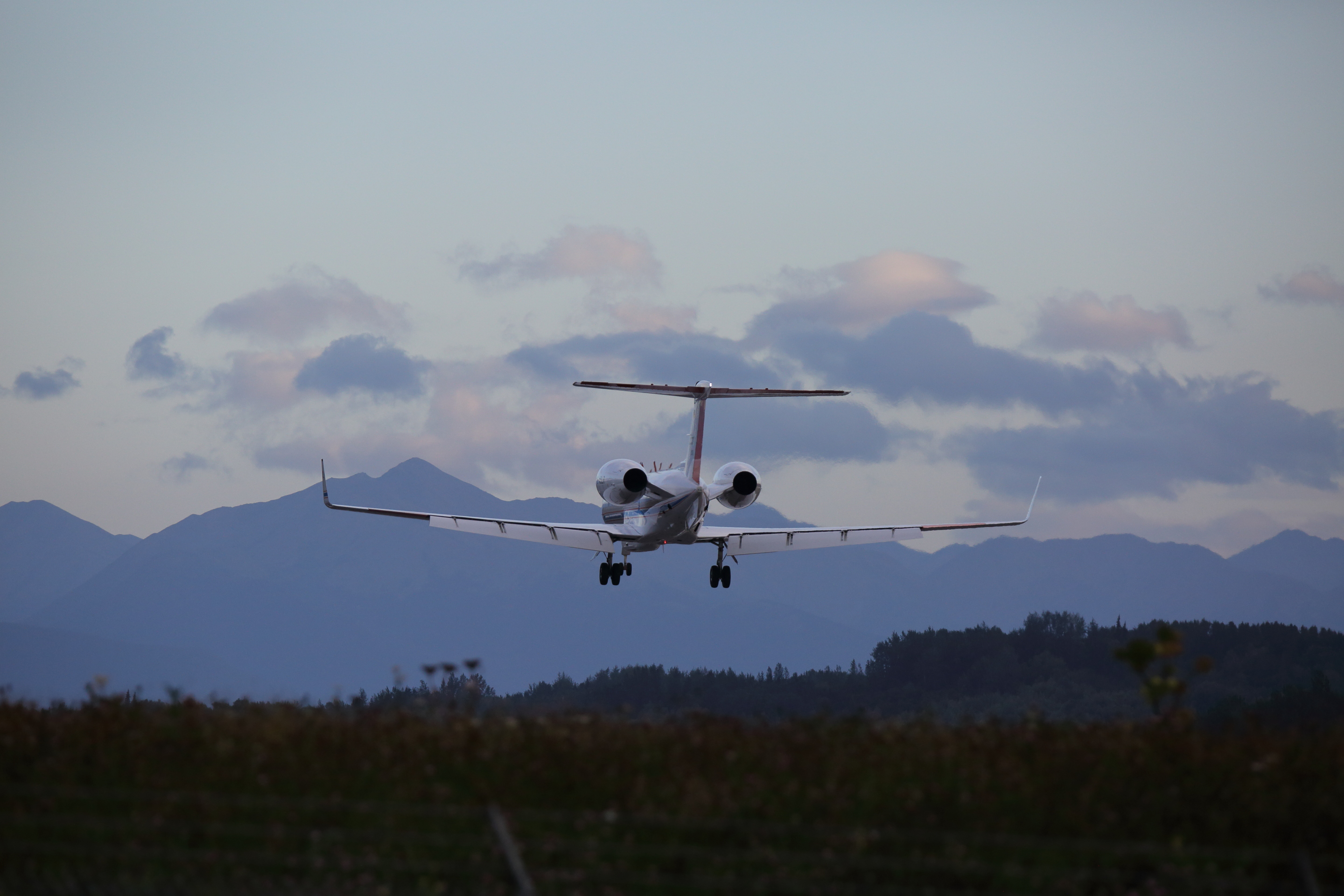
The campaign is well underway. To be honest, a certain sense of everyday life has slowly crept in with us, so you might want to forgive me if I begin to struggle a little to see the extraordinary in the ordinary. Spirits remain high, and there is plenty to tell off:
The week started rather unpleasantly. The cold weather and the new surroundings have promoted some sickness among the team. While most of us suffer the most mild symptoms at best, one of our elderly operators had fallen sick and could not attend the first flight. With no-one being able to replace him the first flight here in Alaska had to be delayed. We wish you the best for a speedy recovery Christof!
The time has finally come. With the second phase of the campaign dawning, we set our eyes onto the distant shores of Alaska. By the time you’re reading this the last of our team has arrived in the United States, to take on the second phase of the campaign head on. We’ll be operating from a hangar run by Atlantic Aviations and are currently setting up the equipment already here.
— Fun Fact: —
The flight to from Frankfurt to Alaska takes 10 hours. Our plane departed from Frankfurt airport around 14:12, and crossed over the Netherlands at 14:12. Our flight took us across the North Sea to island, which we passed at 14:12, and continued across the frozen wastes of the Arctic Ocean, until we reached the west-most stretches of Northern America at 14:12. In total, it took us from 14:12 on August 19th to about 14:12 of August 19th. A bit odd, is it not?
It turns out the flight from Frankfurt to Alaska follows a path of constant local time. On a flight level of about 11 kilometers altitude – and neglecting earths translation – the plane’s compensates the Earth’s rotation surprisingly well, which creates the illusion of time standing still, or rather misconception. Only the time of day remains constant, a circumstance that does not have its own word by my knowledge, but most certainly would be deserving one. Maybe something like equihora maybe?
When thinking of Alaska, one might image a land of ice and snow, of lush, nordic forests and unbridled nature. Now in the summer temperatures are much more timid, and actually match temperatures back in Germany rather well, but its stark beauty has already touched my soul. It isn’t often that romantic expectations are met this well, and while I didn’t have time to venture out into this strange and wild land, the towering Alaskan mountains and vast forests that define the silhouette land inwards are something to behold, and sometimes the Pacific Ocean rises far to the East. At the airport you are greeted by the pantheon of local wildlife, even if they seem a bit stiff at times. The people are kind and very much American in any way, as is the house we’re staying in, in equal parts familiar to Europe as it is different.
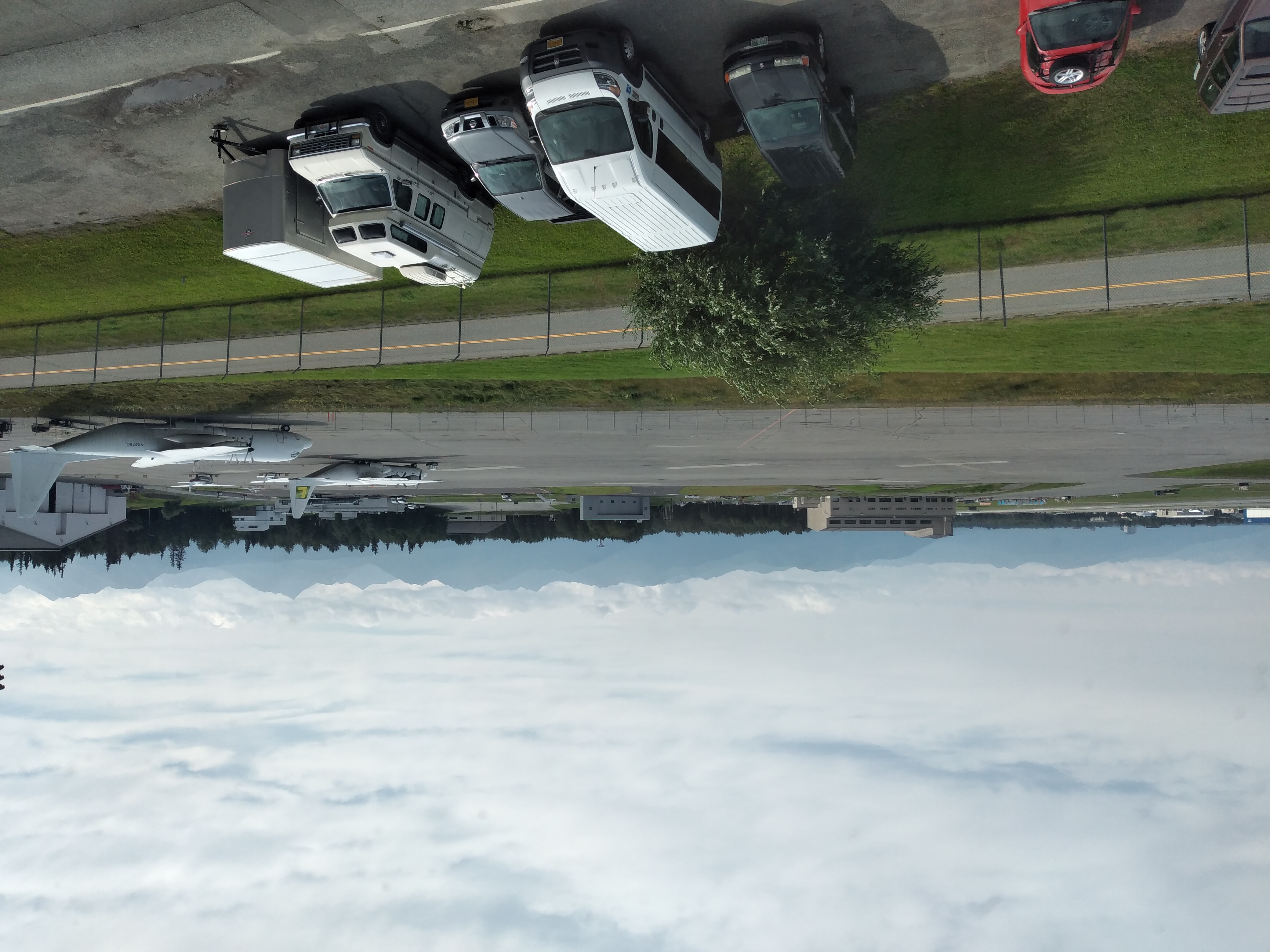
From a scientific standpoint the coming days are most interesting. Our forecast models predict an anti-cyclone moving eastwards towards the continent carrying large amounts of East Asian Air, a rather opportune situation for our campaign. This might be the opportunity to actually probe the same filament multiple times, allowing for deep insights into the occurring mixing processes, dynamics and transports . As we speak our efforts are directed towards study and prediction of this eddy, and I am positive that there will me much value in probing this situation.
And there is yet another opportunity for us. The recent wildfires in Canada have been devastating for both nature and the people of Canada, often forcing them out of their homes into safety, with little hope for an early end. It feels grim to phrase it this way, but regarding scientific probing and understanding and predicting how these fires will eventually impact either global (by transport into the Stratosphere) or local weather it is most fortunate that HALO is in the relative vicinity of this tragedy. I believe our campaign will also probe the outflow of these fires on a rather short hand notice. If given any luck our findings may be useful for predicting and reaction to the inevitable effects these wildfires will have on other regions.
HALO has left Germany today, and will arrive tomorrow here in Anchorage. While crossing the Arctic Sea our instruments will already be operational and gather data. It shows that no flight is wasted, every possible second utilized to the best of our abilities. I have high hopes for the coming phase, and as always will keep you updated on our campaign here in Alaska!
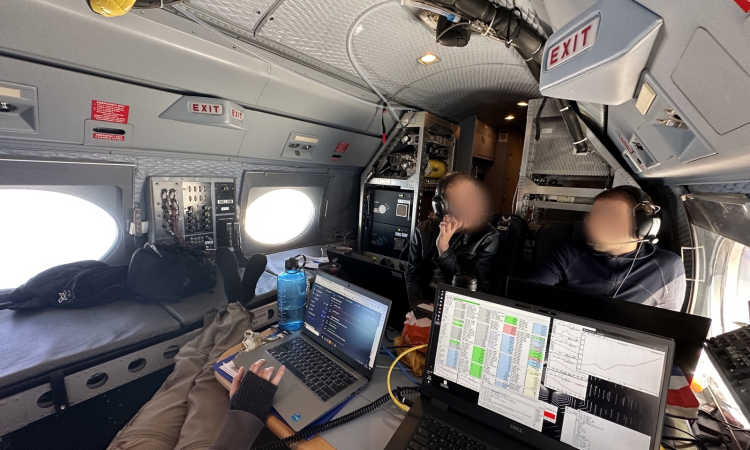
The first phase of the campaign is well underway, and with that summer has finally returned to the northern outstretches of the Alps. We have completed two more scientific flights during the last week, as well as the infamous turbulence flight, with great results. Our first flight brought us all the way up and along Sweden, along the Scandinavian Mountains and back again above the bright beaches on the Baltic Sea, flying straight along the entire country. Another team of scientists did a balloon flight near the flight track as well, and word is they did manage to see us from down there. Scientifically, these two measurements have great synergy potential, and will allow us to cross validate the data or maybe even complement each other, to see what only the other can see.
We used the second flight to follow in the footstep of the first scientific flight across the Mediterranean. The similarity of the tracks does yield valuable data on the development of the Asian monsoon filament, and the first outlooks suggest high quality measurements. Further analysis, however, will have to wait for now. So far we have not noticed any problems with the instruments, and a superstitious person might worry we’d use up all our good luck this early in the campaign.
One must not forget that politics are always components in climate research. While our aims and goals transcend the concepts of nations and territory – as the climate inevitably affects all of us, regardless of borders – it is integral to honor and respect these boundaries. Our permit to enter the middle eastern airspace was revoked on a short-hand notice, forcing us to adapt quickly. While the tracks of flight 02 and 05 no longer match up well in the turning point, these spontaneous changes opened up the opportunity for much more detailed probing of the air filament near Cypher with great altitudinal resolution. I will keep you updated on these results once processing has finished.
— BEHIND THE SCENES: —
As a newcomer to aircraft campaigns I was quite curious how the operators fare during the flight. My colleagues were kind enough to offer me some insights, which you may enjoy here: The image underneath shows the operator booth onboard of HALO. The working place of a scientist operating complex and highly advanced technology isn’t that different from a typical desk in an office or in a laboratory. I learned something new that day. One might mistakenly get the impression of laxity and comfort when looking at the situation onboard. When flying in 15 kilometers altitude (our current best level with complete instrumentation) strong temperature gradients can occur inside the cubicle. The circulation is limited, and the ground air may actually become winterly cold.
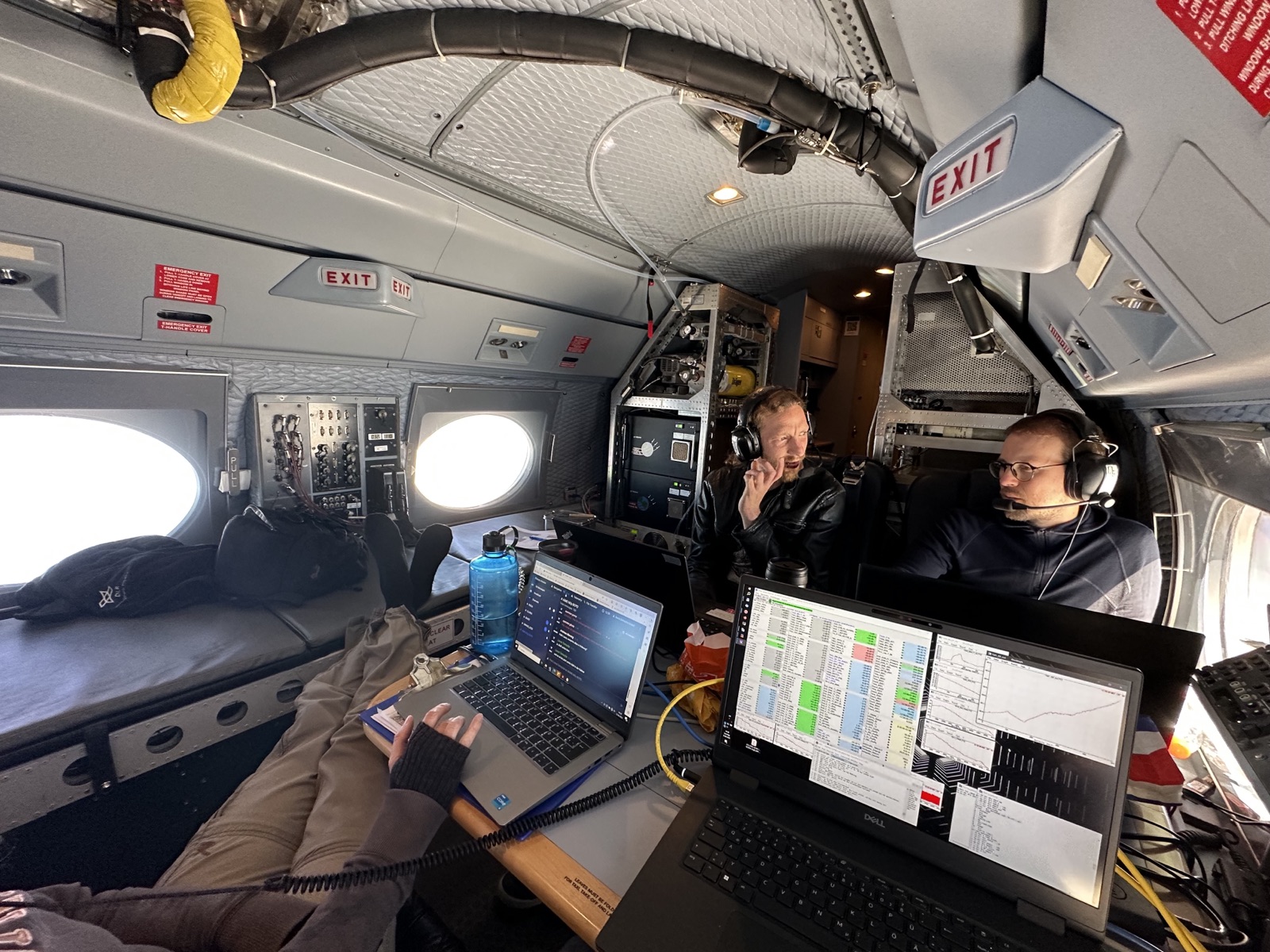
There is another thing which I noticed personally. Ever since we arrived in Bavaria, I have noticed it in my own speech. Somehow the local dialect is mingling deeper and deeper with my own. As the locals are affected the most I would propose that it might be something in the air. If the last scientific flight will be over Germany (as of now a possibility) it might be worth it to search for it. When would we have such an opportunity again I wonder. Might also be in the local beer, now that I think about it 🙂
This will conclude phase 1 of the PHILEAS campaign. The next stop will be the far coasts of Alaska, and with all preparations successful and the instruments working exceptionally well there is nothing to do other than hope for good weather. Stay tuned for phase 2.
Pale clouds and persistent rain usually do not bode well as omen, and only a fool or a dreamer would dare to keep high hopes and excitement on such a rather sad summer day, but looks can be deceiving, and the first scientific flight ‘Bitburg’ today in Oberpfaffenhofen was a resounding success, only one of many more we dare to dream of today.
Following the planned track down south over Israel and Jordan – a historic first for HALO – and returning home through the mediterranian sea crossing Cyprus, it took HALO a total of 8 hours and 43 minutes, and a fully functioning instrumental setup promises great measurements and (hopefully) deeper insights into the chemical composition of the southern asian monsoon and its influence on weather and our climate. While a throughout analysis of all the data is still in the making, onboard analysis suggests the relevant and deeply sought after regions of still ‘fresh’ monsoon air have been measured!
But this is but a taste of things to come. In the coming days here in Oberpfaffenhofen there will be more flights to speak of, making sure that HALO and the instruments on board are working as best as we can manage and taking more looks into our winds and air. Soon there will be a new call to follow, one that beckons us deep from the north, to the last frontier in Amerika. Follow us on the upcoming next stage of the PHILEAS campaign in Anchorage, Alaska, where the journey of HALO will continue, on the hunt for new insights, new discoveries and new adventures in Probing HIgh Latitude air Export of the Asian Summer monsoon ( – that’s why they call it that!)
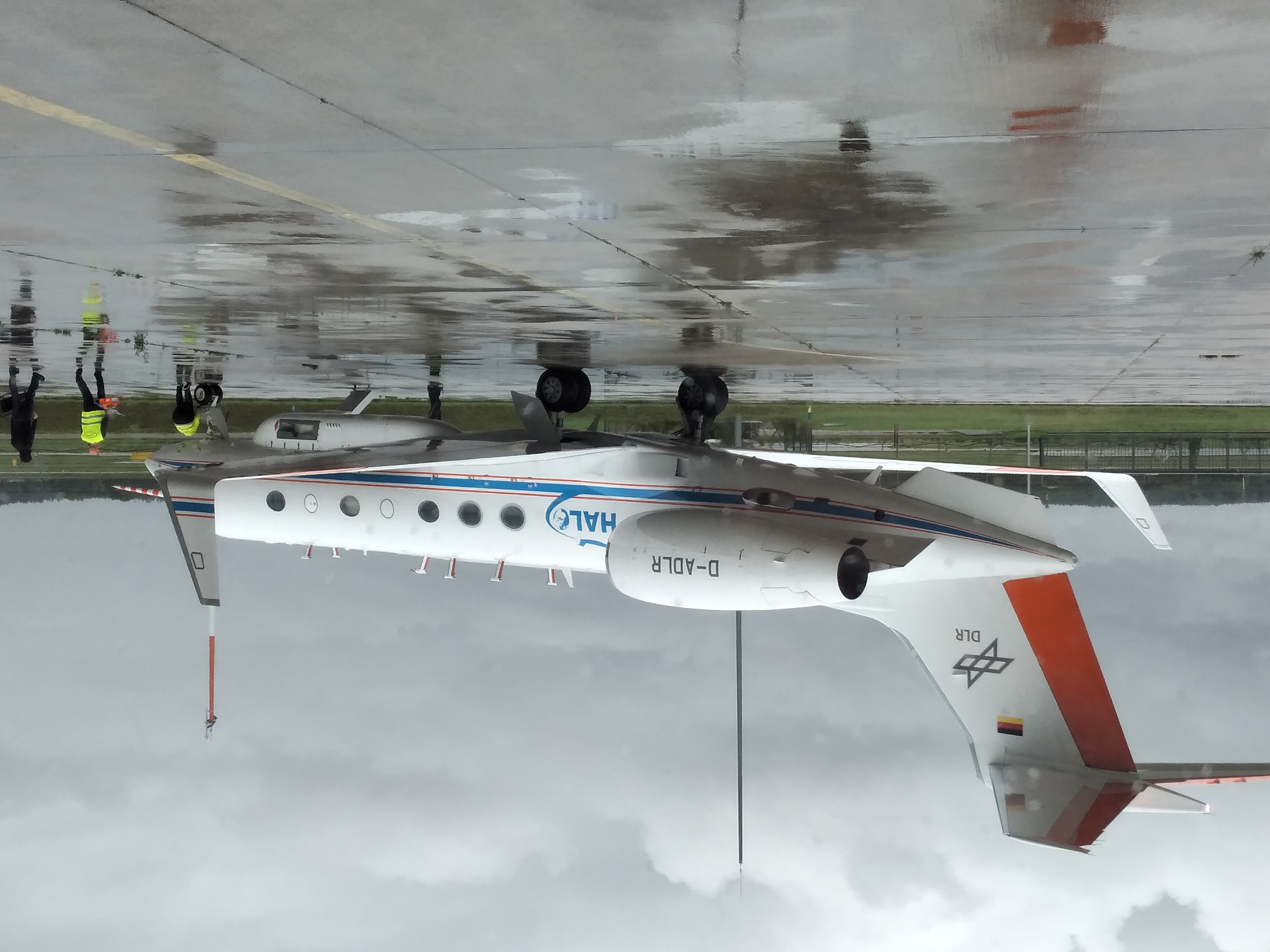
End of last year I was living and employed in Juelich and now I sit in sunny South Africa with my German ex-colleagues. This seems strange to me as for the last 3 months I have been living and working in South Africa, yet I am again working with my old colleagues from Forschungszentrum Juelich.

Recent Comments